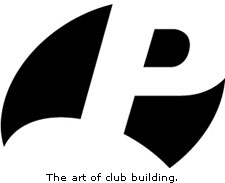The art of club building with Pinemeadow Golf
Staff Report
Step #1: Order Submission
 First, the order is placed either via the Pinemeadow website (PinemeadowGolf.com) or by phone (800-309-6878) with one of our customer service representatives. Once all the pertinent information is verified, the order is released to production.
First, the order is placed either via the Pinemeadow website (PinemeadowGolf.com) or by phone (800-309-6878) with one of our customer service representatives. Once all the pertinent information is verified, the order is released to production.
Step #2: Production
The production team prints out the "pick ticket," which goes through its first quality control check (Q.C.) to verify that all the items are in stock and the flex (stiff, regular, ladies etc.) and style are correct. The production team checks to see if anything unusual stands out in the order and it will go back to the CSR if there are any problems. The CSR will contact the customer to confirm information.
Once these steps are completed, official production begins. The heads and shafts are placed in a bin along with the pick ticket. The orders are kept separate throughout the rest of the building process to ensure the clubs don't get mixed up from different orders are not mistakenly combined and shipped to the wrong people.
Step #3: Shaft Cutting Room
The next step is it enters the cutting room. The first thing that happens in the cutting room is step two of the Q.C. process. The shaft cutter makes sure that the correct heads and shafts have been pulled. Once that is confirmed, the shaft cutting team will cut the specified length and flex requested by the customer. This is accomplished by either cutting from the tip or the butt, depending on desired flex. He then scuffs the tip of the shaft on a grinding wheel, providing a smooth surface for the epoxy bond.
Step #4: Ferrule Installation
After leaving the shaft cutting room, the ferrules are applied. The main purpose of the ferrule is to make sure the shaft is centered in the hosel of the club head. It also adds to the overall aesthetic of the club. The hosel is a socket or the neck of the club head that allows the shaft to connect to the club head.
Step #5: Epoxy/Shaft Alignment
Now the order goes to the epoxy station. We use a two-part epoxy that is combined into a 50/50 mixture. This is done in our specially designed epoxy resin dispenser. The hosel is filled to the top with epoxy mixture and the ferrule and the shaft are spun into hosel to ensure that the shaft is completely covered in epoxy. While the epoxy is still wet, the silk screen on the shaft is oriented and the shaft is spine aligned if necessary.
When a shaft is manufactured, there is a spine created where the materials are joined. Spine aligning ensures that this does not interfere with the natural flex of the shaft. At this point, any excess epoxy is removed. The clubs are placed in a climate controlled area and the epoxy is allowed to cure overnight. After the curing process is completed, the shaft bands that indicate shaft flex are affixed.
Step #6: Grip Curing
The cured clubs are sent to the gripping station. The clubs are secured in a two-point clamp, and grip tape is placed on the shaft in strips. A generous amount of our specially formulated, citrus based, non-toxic tape activator is then applied. When dry, this activator allows the tape to adhere to the grip and keeps the grip from twisting. While the activator is still wet, air blows on the grip and the grip is aligned with a laser to ensure a perfect line of sight at address. This is all done on a state of the art gripping table designed and manufactured by Pinemeadow Golf.
Step #7: Q.C. Check
The last stop before the clubs leave the building is at the final quality control station. We check everything against the original pick ticket to make sure it is the correct hand (RH/LH), the correct model (i.e.10.5 degree Doublewall Driver), correct shaft with the correct length and flex, correct grip. We make sure the ferrule is flush with the hosel and the grip, silk screen and the spine (if applicable) are all checked for proper alignment. The grips are inspected to make sure there is no space between the end of the shaft and the end of the grip. The clubs are given one last cleaning, the heads placed in a bubble wrap bag and the entire club is enclosed in a poly bag and sent to the shipping department.
Step #8: Final Q.C. Check and Shipping:
The first thing our shipper does is double check the order. This step ensures the item packed corresponds with the pick ticket. The team member wraps the order in hefty paper (this keeps the clubs from moving around in transit). The products are placed in a Pinemeadow cardboard box and shipped to the customer.
Clubs arrive at your door within 7 business days when your order is placed!
That's it. This is a basic, thumbnail sketch from beginning to end of how Pinemeadow Golf manufactures your custom golf club. We hope this article answers a few questions. We love talking and sharing this information with anyone who wants to learn more so feel free to contact us for any additional information or if you have any questions regarding the club building process.